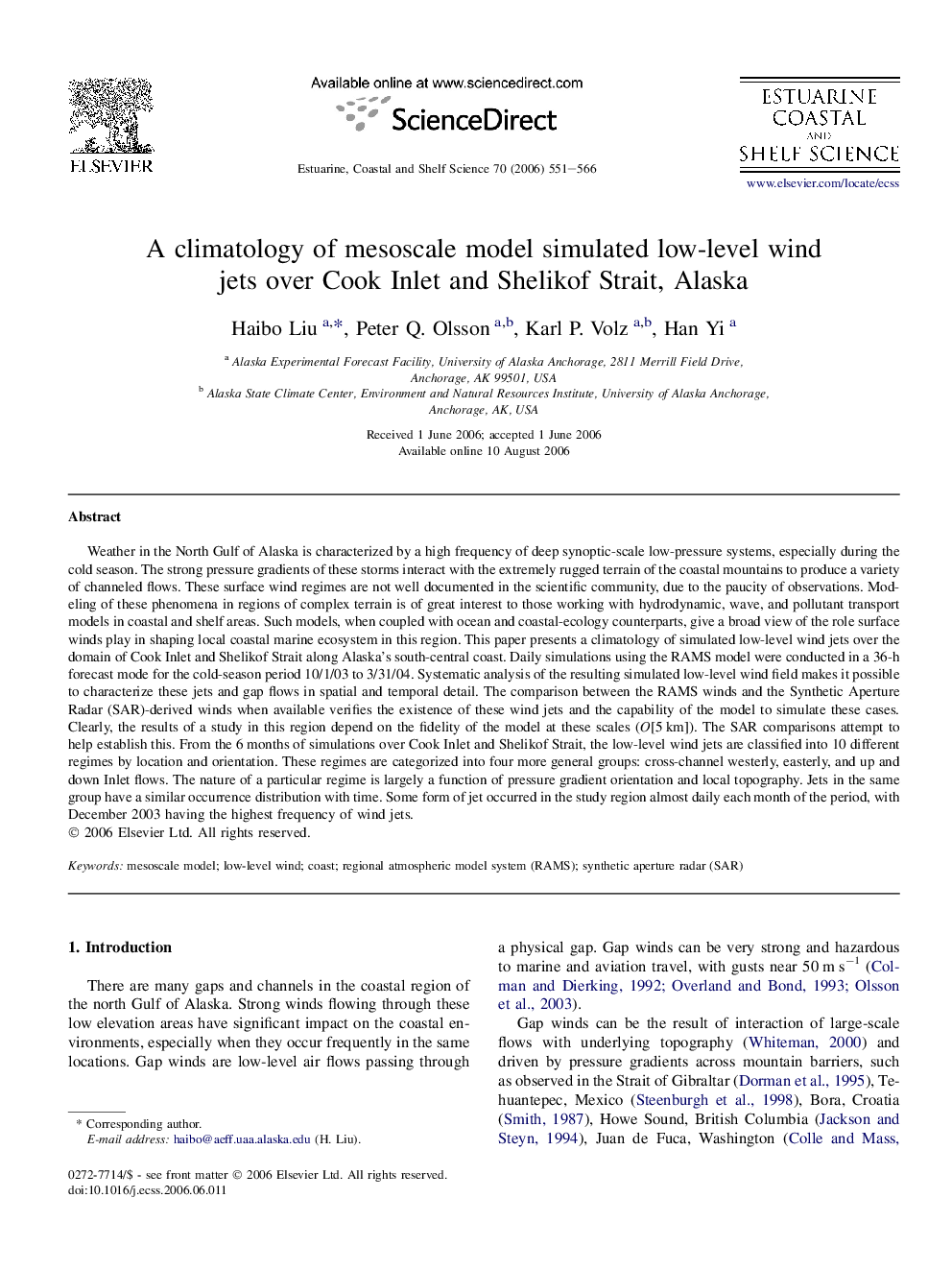| کد مقاله | کد نشریه | سال انتشار | مقاله انگلیسی | نسخه تمام متن |
|---|---|---|---|---|
| 4542104 | 1626708 | 2006 | 16 صفحه PDF | دانلود رایگان |

Weather in the North Gulf of Alaska is characterized by a high frequency of deep synoptic-scale low-pressure systems, especially during the cold season. The strong pressure gradients of these storms interact with the extremely rugged terrain of the coastal mountains to produce a variety of channeled flows. These surface wind regimes are not well documented in the scientific community, due to the paucity of observations. Modeling of these phenomena in regions of complex terrain is of great interest to those working with hydrodynamic, wave, and pollutant transport models in coastal and shelf areas. Such models, when coupled with ocean and coastal-ecology counterparts, give a broad view of the role surface winds play in shaping local coastal marine ecosystem in this region. This paper presents a climatology of simulated low-level wind jets over the domain of Cook Inlet and Shelikof Strait along Alaska's south-central coast. Daily simulations using the RAMS model were conducted in a 36-h forecast mode for the cold-season period 10/1/03 to 3/31/04. Systematic analysis of the resulting simulated low-level wind field makes it possible to characterize these jets and gap flows in spatial and temporal detail. The comparison between the RAMS winds and the Synthetic Aperture Radar (SAR)-derived winds when available verifies the existence of these wind jets and the capability of the model to simulate these cases. Clearly, the results of a study in this region depend on the fidelity of the model at these scales (O[5 km]). The SAR comparisons attempt to help establish this. From the 6 months of simulations over Cook Inlet and Shelikof Strait, the low-level wind jets are classified into 10 different regimes by location and orientation. These regimes are categorized into four more general groups: cross-channel westerly, easterly, and up and down Inlet flows. The nature of a particular regime is largely a function of pressure gradient orientation and local topography. Jets in the same group have a similar occurrence distribution with time. Some form of jet occurred in the study region almost daily each month of the period, with December 2003 having the highest frequency of wind jets.
Journal: Estuarine, Coastal and Shelf Science - Volume 70, Issue 4, December 2006, Pages 551–566